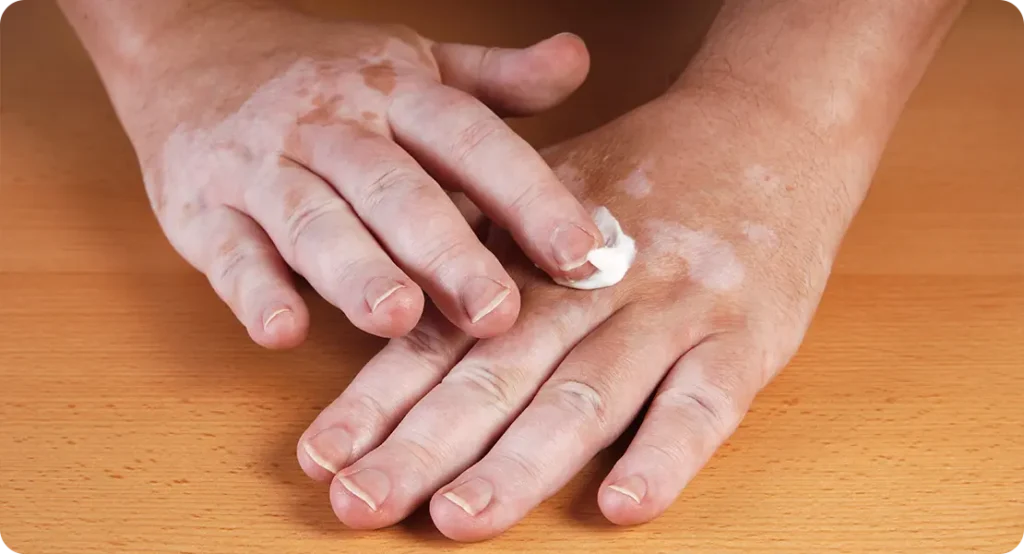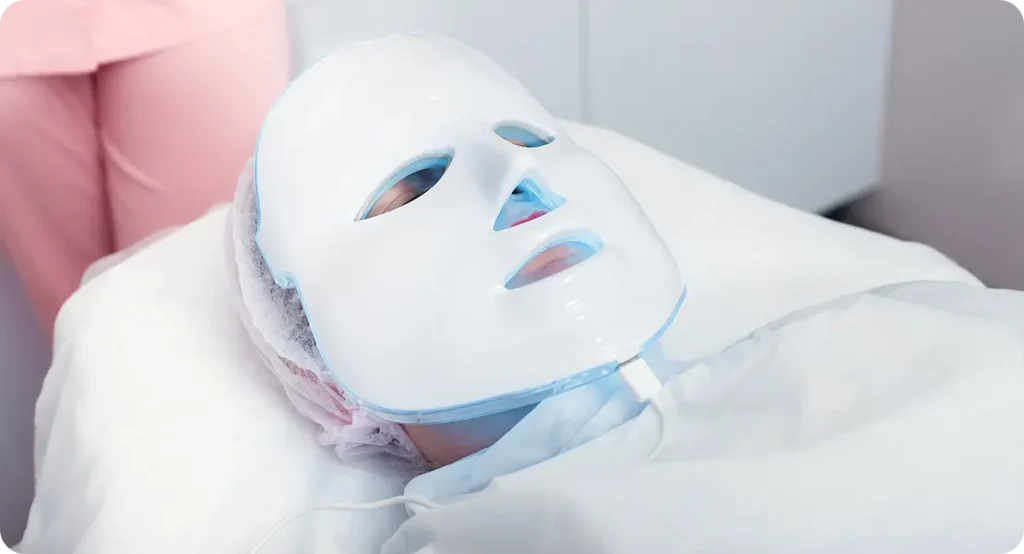If you have vitiligo, you’ve probably noticed patches of lighter skin appearing in different areas of your body—on your face, hands, arms, or even inside your mouth. You might be wondering why this is happening and what you can do about it. The good news? There are treatment options that can help restore pigment and even out your skin tone. While there’s no absolute cure, there are ways to manage it effectively. Let’s walk through your options together.
Vitiligo is a long-term skin condition that happens when the cells that produce pigment—melanocytes—stop working or disappear. This leaves some areas of your skin looking lighter or even completely white. It can affect anyone, regardless of skin tone, but it tends to be more noticeable in people with darker skin. Vitiligo isn’t painful or contagious, but it can be frustrating, especially when it affects visible areas. If you’ve been feeling self-conscious about it, you’re not alone—many people with vitiligo feel the same way.
There are different types of vitiligo, and understanding which type you have can help you figure out the best way to manage it. The most common form, non-segmental vitiligo, usually appears on both sides of the body in a symmetrical pattern—starting on the hands, face, or around the mouth and eyes. It often spreads over time. Segmental vitiligo, on the other hand, affects only one side of the body or a specific area and tends to develop earlier in life. This type might spread for a while but then stop progressing.
Doctors aren’t entirely sure what causes vitiligo, but it’s believed to be an autoimmune condition—meaning your immune system mistakenly attacks the melanocytes in your skin. Genetics can also play a role, as vitiligo sometimes runs in families. Certain factors like stress, sunburn, or exposure to certain chemicals might trigger or worsen it. While there’s no guaranteed way to stop vitiligo from developing, catching it early and starting treatment can help slow it down and even restore some of your natural skin colour.
Living with vitiligo can be tough, especially when it affects how you feel about yourself. That’s why so many people look for ways to either bring pigment back or even out their skin tone. The good news is that there are multiple treatment options available—from topical creams to light therapy and even surgical procedures. The best approach depends on how much your vitiligo has spread, how quickly it’s changing, and what you feel comfortable with. Let’s go through your treatment options so you can find the best solution for you.
1. Topical Treatments
One of the first lines of treatment for vitiligo is topical creams or ointments. These can help restore some of your skin’s colour over time.
- Topical Janus Kinase (JAK) Inhibitors – A newer approach, these creams work on the immune system to help stop the attack on pigment-producing cells. JAK inhibitors interfere with specific pathways that contribute to vitiligo progression, reducing inflammation and encouraging repigmentation. Early research has shown promising results, with some patients experiencing significant improvement in their vitiligo patches. However, as this treatment is still relatively new, long-term data on its safety and effectiveness is still being collected. Some JAK inhibitors are available in both topical and oral forms, with topical versions being preferred due to their lower risk of systemic side effects. While JAK inhibitors are not yet widely available, ongoing clinical trials continue to evaluate their potential for broader use in vitiligo treatment.

- Calcineurin Inhibitors – Medicines like tacrolimus or pimecrolimus are often used on sensitive areas, like the face and neck. These don’t have the same side effects as steroids and can be effective for smaller patches. Calcineurin inhibitors work by modulating the immune response, reducing the attack on melanocytes, and allowing pigmentation to return gradually. While they are generally well-tolerated, some people experience mild burning or redness when they first start using these creams. This discomfort usually subsides after a few days of regular application. Dermatologists often recommend using calcineurin inhibitors in conjunction with light therapy to improve their effectiveness. Unlike corticosteroids, calcineurin inhibitors can be used long-term without the risk of skin thinning, making them a preferred choice for treating vitiligo on the face and other delicate areas.
- Topical Janus Kinase (JAK) Inhibitors – A newer approach, these creams work on the immune system to help stop the attack on pigment-producing cells. JAK inhibitors interfere with specific pathways that contribute to vitiligo progression, reducing inflammation and encouraging repigmentation. Early research has shown promising results, with some patients experiencing significant improvement in their vitiligo patches. However, as this treatment is still relatively new, long-term data on its safety and effectiveness is still being collected. Some JAK inhibitors are available in both topical and oral forms, with topical versions being preferred due to their lower risk of systemic side effects. While JAK inhibitors are not yet widely available, ongoing clinical trials continue to evaluate their potential for broader use in vitiligo treatment.
2. Light Therapy (Phototherapy)
If topical treatments aren’t doing the job, light therapy could be the next step. This involves exposing the skin to ultraviolet (UV) light under controlled conditions.
- Narrowband UVB Therapy – This is one of the most effective treatments, using a specific type of UV light to stimulate pigment production. It usually requires multiple sessions per week for several months. UVB therapy is commonly administered in dermatology clinics, but home phototherapy units are also available for convenience. Regular exposure to narrowband UVB can gradually restore pigment, but patience is required as results may take months to appear. Combining this treatment with topical medications can improve effectiveness. Some people experience mild redness or irritation after sessions, but this is generally manageable. Long-term use of UVB therapy should be monitored by a dermatologist to avoid overexposure and potential skin damage. Protective measures, such as using sunscreen on unaffected skin, are recommended during treatment.

- Excimer Laser – A more targeted form of light therapy, this works well for small patches of vitiligo, especially on the face and hands. The laser delivers concentrated UVB light directly to the depigmented areas, minimising exposure to healthy skin. Since the excimer laser provides a higher intensity of light than standard phototherapy, it can produce faster results in smaller areas. However, it requires frequent treatments, typically two to three times per week. Side effects may include temporary redness or blistering. This treatment is ideal for localised vitiligo but may not be practical for widespread cases due to time and cost constraints.
3. Skin Grafting and Surgical Treatments
If your vitiligo has been stable for at least a year, meaning it hasn’t spread or changed significantly, you may be a good candidate for surgical treatments. These procedures aim to restore pigment by transplanting healthy melanocyte-containing skin into affected areas. Surgical treatments are typically recommended for people with segmental or localised vitiligo, rather than widespread cases. Below are the most common procedures used for vitiligo treatment:
- Punch Grafting – Small sections of normal pigmented skin are taken from one part of your body and placed into the vitiligo patches. This technique introduces melanocytes to affected areas, potentially restoring colour over time. However, it requires careful post-procedure care to ensure optimal healing and avoid scarring. The success of punch grafting depends on factors such as skin type and the location of the treated area. Results can take months to become noticeable, and multiple sessions may be necessary for widespread vitiligo. Although effective, punch grafting is not suitable for everyone, particularly those with active or spreading vitiligo. Consultation with a dermatologist is essential to determine if this approach is right for you.
- Blister Grafting – This method involves creating blisters on a healthy, pigmented area of your skin using suction. Once the blisters form, the top layer of skin is removed and transplanted onto depigmented areas.This technique is less invasive than punch grafting and carries a lower risk of scarring. However, the process can be time-consuming, and results may take months to become visible. Blister grafting works best for smaller areas of vitiligo and is most effective when combined with other treatments such as light therapy or topical medications.
- Split-Thickness Skin Grafting – In this procedure, a thin layer of pigmented skin is shaved from a donor site and placed over the vitiligo patches. The donor site usually heals over time, leaving minimal scarring, while the transplanted skin helps repigment the affected area. This technique is often used for larger vitiligo patches and provides faster, more noticeable results compared to other grafting methods. However, because it involves removing a larger area of skin, there is a slightly higher risk of scarring at both the donor and recipient sites. Patients undergoing this procedure must follow strict aftercare instructions to ensure proper healing and reduce the risk of infection or rejection of the transplanted skin.
- Melanocyte Transplantation (Cell Suspension Transplant) – This is an advanced technique where melanocytes (pigment-producing cells) are extracted from a small sample of healthy skin, processed in a lab, and then applied to depigmented areas. This method has shown promising results, with many patients experiencing significant repigmentation within a few months. Because it directly transfers active melanocytes, it can offer more natural-looking results compared to traditional grafting techniques. While this procedure is still relatively new and not widely available, it is gaining popularity as a highly effective option for restoring skin colour in vitiligo patients.

- Tattooing (Micropigmentation) – Some people opt for tattooing, also known as micropigmentation, to implant pigment into depigmented areas. This method can be useful for small patches of vitiligo, particularly on the lips or other highly visible areas. The downside of micropigmentation is that tattooed pigment may not match the surrounding skin exactly, and it can fade over time. Additionally, since tattooing does not restore melanocytes, it does not offer a biological cure for vitiligo—only a cosmetic solution. It’s essential to work with an experienced professional who understands skin tone variations and the specific challenges of vitiligo tattooing to ensure the best possible results.
Surgical treatments for vitiligo can be highly effective for certain individuals, but they are not suitable for everyone. They are best for those with stable vitiligo, meaning no new patches have appeared for at least a year. Each procedure comes with its own set of risks and benefits, and it’s essential to consult with a dermatologist or a specialist in vitiligo treatments before making a decision.
Combining surgical methods with other treatments, such as phototherapy or topical medications, can often enhance results. If you’re considering a surgical option, be sure to discuss your goals, expectations, and any conce
4. Camouflage and Cosmetic Options
If medical treatments aren’t suitable for you, or you want an immediate way to cover depigmented areas, camouflage and cosmetic solutions can be highly effective.

- Makeup and Self-Tanners – Specialised cosmetics can help blend the depigmented areas with your natural skin tone. Many brands offer waterproof and long-lasting formulas that provide coverage throughout the day. While makeup provides an instant solution, it requires daily application and may not be practical for everyone. Self-tanners containing dihydroxyacetone (DHA) can darken lighter patches, making them less noticeable. However, finding the right shade match may take some experimentation, and results are temporary, requiring reapplication every few days. Some individuals prefer mineral-based foundations and colour-correcting concealers for a natural look. Choosing hypoallergenic products is advisable to prevent skin irritation, especially for those with sensitive skin.
5. Depigmentation Therapy
If vitiligo has spread extensively, some people choose to remove the remaining pigment from their skin to create a uniform tone.
- Monobenzone Cream – This permanently removes pigment from the remaining normal skin to match the vitiligo patches. It’s a big decision and only suitable for people with widespread vitiligo. The depigmentation process is irreversible, meaning the skin will not regain its natural pigmentation. This option is typically considered by those whose vitiligo covers more than 50% of their body and who prefer an even skin tone rather than patchy pigmentation. Patients opting for depigmentation therapy must take extra care with sun protection, as the skin loses all melanin, making it highly susceptible to sunburn. High-SPF sunscreen and protective clothing become essential for daily skincare.
6. Lifestyle Changes and Home Remedies
Managing vitiligo isn’t just about medical treatments; lifestyle changes can also make a difference.
- Sun Protection – Since vitiligo-affected skin is more sensitive to the sun, always use a high-SPF sunscreen. Sunscreen helps prevent sunburn and also reduces contrast between pigmented and depigmented areas, making vitiligo less noticeable. Wearing protective clothing, such as wide-brimmed hats and long-sleeved shirts, can further shield the skin from harmful UV rays. Seeking shade during peak sun hours also helps maintain skin health. Consistently using sun protection reduces the risk of skin cancer and premature ageing, making it a vital step in managing vitiligo effectively.
- Diet and Nutrition – While no specific diet can cure vitiligo, eating a nutrient-rich diet that includes antioxidants, vitamins, and minerals can help support skin health. Foods high in vitamins C, D, and E, along with zinc and folic acid, may aid in overall immune function.Some research suggests that reducing inflammatory foods such as processed sugars and dairy products might help in slowing vitiligo progression. Including fresh fruits, vegetables, nuts, and seeds in your diet can provide essential nutrients beneficial for skin repair and pigmentation. Hydration is also crucial. Drinking plenty of water can keep your skin hydrated and promote overall skin health. Herbal teas and natural fruit juices can be good alternatives to sugary drinks.
- Managing Stress and Mental Health – Stress is believed to contribute to vitiligo flare-ups, so incorporating relaxation techniques into your daily routine can be beneficial. Activities like yoga, meditation, and deep-breathing exercises can help manage stress levels. Engaging in regular physical activity, such as walking or swimming, can also help in improving mood and overall well-being. Exercise releases endorphins, which can help reduce anxiety and promote better sleep. Seeking support from friends, family, or professional counsellors can be helpful if vitiligo affects your confidence. Joining vitiligo support groups or online communities can provide encouragement and advice from others with similar experiences.
Final Thoughts
Everyone’s vitiligo is different, so what works for one person might not work for another. If you’re unsure where to start, speaking to a dermatologist can help you figure out the best treatment plan for your skin type and lifestyle. While vitiligo can be challenging, there are plenty of options available to help you feel comfortable and confident in your skin.

If you’re considering surgical treatment for vitiligo, you can contact us at The London Dermatology Centre to consult Dr Sunil Chopra. As a world-renowned expert dermatologist specialising in vitiligo, he can provide personalised recommendations and advanced treatment options to help restore your skin’s pigment.
